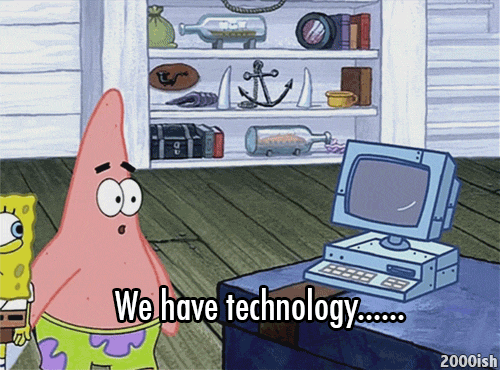Avoiding the Martech Minefield: 8 Mistakes Enterprises Make (and How to Steer Clear)

Having spent years navigating the ever-evolving marketing landscape, I’ve seen the transformative power of a well-crafted Martech stack. But navigating the plethora of tools and avoiding common pitfalls can be treacherous.
I’ve distilled my hard-won knowledge into 8 actionable insights that will help you steer clear of the most frequent mistakes and unlock the full potential of your Martech stack.

1. The Consent Chaos: Tug of War between CRM & Marketing Automation Platform
The struggle for a single source of truth for consent data plagues many organizations. While centralizing data seems ideal, a 2022 study by TrustRadius revealed that 57% of marketers struggle with data silos, impacting their ability to manage consent effectively. Remember, your marketing automation platform (MAP) is the engine sending communications. Other systems in stack can get consents a bit late, but if user consent data isn’t synced with your MAP in real time, you risk jeopardizing user experience, regulatory compliance, and ultimately, the trust you’ve painstakingly built. Hence, prioritize clean, and direct integrated consent data within your MAP for seamless, effective communication that respects user preferences.

2. Think Recipe Box, Not Cookbook
Imagine your data is like all the ingredients you have in your kitchen. Now, you could organize them perfectly, like a library, with spices in one drawer, vegetables in another, and so on. That’s like data normalization. It’s neat and tidy, but not great for whipping up something personalized.
Your MAP, on the other hand, is like your recipe box. You pull out specific ingredients based on what you’re making, whether it’s a spicy curry or a sweet dessert. That’s like data de-normalization. It might not be perfectly organized, but it lets you quickly grab exactly what you need to create something unique and delicious for each customer.
Just like you wouldn’t follow a complicated recipe book for every meal, your MAP doesn’t need perfectly organized data for every message. De-normalization lets it be flexible and creative, serving up the perfect marketing message for each individual like a delicious, personalized dish.

3. Pushing Your MAP Past Its Limits: Focus on Core Strengths for Maximum Impact
MAPs come in all shapes and sizes, from basic email senders to complex automation platforms. While advanced platforms offer data manipulation and unification capabilities, resist the urge to overload them. Treating your MAP as a data warehouse or ETL tool diminishes its core strength: high-speed, personalized communication. Optimize data processes elsewhere and empower your MAP to excel at what it does best – delivering targeted outreach that drives engagement and conversions.

4. Redundancy Bites, Simplicity Thrives
Ever seen an enterprise with five tools doing the same job? It might seem like “just in case” security, but it’s a recipe for disaster. Redundant platforms create data silos, complicate workflows, and drain resources, according to a 2021 study by Forbes, with 45% of marketers reporting challenges managing multiple marketing technologies. Invest in a single solution that meets your needs, avoiding the chaos of scattered data and costly aggregation struggles. Remember, less is often more when it comes to building an efficient and effective Martech stack.

5. Shiny Object Syndrome: Tools You Don’t Need, Value You Can’t Create
Don’t fall victim to the allure of the latest tech buzzword and invest in tools you don’t truly need. A 2022 study by McKinsey revealed that 70% of digital transformations fail due to a lack of clear goals and objectives. Evaluate your current and near-future use cases before diving into advanced solutions. Future-proofing is great, but prioritize practical needs and remember, technology evolves swiftly – leave room for modernization later. Focus on investing in solutions that solve real problems and align with your specific marketing goals.

6. Tech-First, User-Last: A Recipe for Confusion and Frustration
While your tech team might relish the power and flexibility of a sophisticated platform, remember, it’s your business users and customers who ultimately matter. A 2023 study by MarTech Today found that 52% of marketers struggle with user adoption of new marketing technologies. Implementing solely from a technology perspective alienates users and restricts data access, hindering your ability to deliver personalized, valuable experiences. Design your Martech stack around business needs, simplifying data and processes for efficient, user-friendly communication that empowers your team and delights your customers.

7. Data Dilemma: The Unsung Hero, Not the Silent Saboteur
Data quality is often the silent saboteur of Martech success. Many invest heavily in CRM-MAP integration, only to have business users revert to basic email blasts due to data distrust. According to a 2021 report by Experian, data quality issues cost US businesses an estimated $3 trillion annually. Don’t let data quality become a roadblock. Foster collaboration between teams to address data issues proactively. Once trust is broken, regaining data governance becomes an uphill battle. Remember, clean, accurate data is the fuel that powers your Martech engine – prioritize its quality from the outset.

8. Talent Trap: Invest in Expertise, Reap the Rewards
Frequent platform hopping, often due to a lack of internal expertise, is a common pitfall. While the right tools are crucial, remember, they’re only as effective as the hands wielding them.
Here’s the trap: enterprises invest heavily in platforms, expecting immediate results. But without proper training and upskilling, their teams struggle to unlock the platform’s full potential. This leads to frustration, misinterpretations, and ultimately, the tempting allure of a “new and better” solution.
The Solution: Invest in Your People, Not Just Platforms
Think of your Martech stack as a high-performance car. The most advanced engine won’t deliver peak performance without a skilled driver behind the wheel. That’s where your team comes in.
Instead of impulsive platform jumps, prioritize optimization and upskilling. Invest in comprehensive training programs tailored to your specific platform and team needs. Empower your team to become Martech masters, able to extract maximum value from your existing tools.
Remember, navigating the Martech landscape can feel like traversing a minefield, but by avoiding these common mistakes and prioritizing user-centricity, data quality, and team expertise, you can transform it into a fertile ground where your marketing efforts blossom. Building a Martech stack that empowers your efforts and unlocks true ROI isn’t just about the tools, it’s about fostering a culture of data-driven decision-making, user understanding, and continuous improvement.
Don’t let past mistakes hold you back. Take the first step ! I’m here to help you avoid these pitfalls and achieve your marketing goals. Feel free to connect with me. Let’s work together to build a Martech stack that helps you achieve your marketing goals and deliver exceptional customer experiences.
